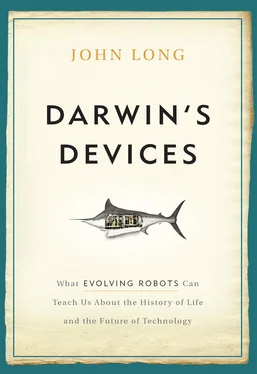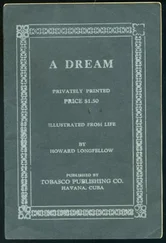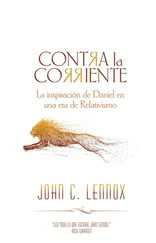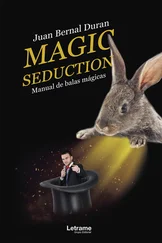A cautionary note: I’m being flippant here in several ways. First, the list of behaviors in this paragraph is vertebrate-centric. Second, it’s unlikely that any individual vertebrate alters behavior very much in its own lifetime; big changes in behavioral strategy occur over generational time.
Scoring points by helping your relatives raise kin is formally recognized as “inclusive fitness.”
Although it probably seems crazy at first, I’m not sure that evolving robots aren’t alive. The quality that we recognize scientifically as “life” is usually a suite of characteristics that include the ability of a self-contained entity to (1) make additional and similar versions of itself, (2) gather energy, (3) convert and use the gathered energy to perform chemical and mechanical work (e.g., build or repair itself, gather more energy, make copies of itself), and (4) decrease entropy (disorder) locally and temporarily. These ideas are influenced, in part, by the physicist Erwin Schrödinger in his 1944 book, What Is Life? (based on lectures delivered under the auspices of the Dublin Institute for Advanced Studies, Dublin, February 1943). From cognitive science, I would include, in our life list, the ability of a self-contained entity to (5) react to changes in the patterns of the global energy array with the goal of reproducing and gathering energy. What do you think?
This definition of natural selection is a bit different from that found in textbooks. In Mark Ridley’s excellent textbook, Evolution (3rd ed.)(Malden, MA: Blackwell Science, 2004), he enumerates Darwin’s four necessary and sufficient conditions for natural selection: (1) reproduction, (2) heredity, specifically, offspring resembling parents, (3) variation in individual characters among members of the population, and (4) that variation in reproductive output for individuals is tied to the variation in characters. Note here that the concept of a population is secondary; I make it primary in order to emphasize the concept of interaction of individuals and their world being defined by who they are with and where they are.
You can take this journey by reading Jonathan Weiner’s book The Beak of the Finch: A Story of Evolution in Our Time (New York: Alfred A. Knopf, 1994).
This insight—that slow, small changes happening right in front of us are sufficient to drive large-scale and dramatic changes over long periods of time—is the basis for explaining any kind of evolutionary change. When we’ve published evolutionary simulations with robots that measure change over generational time, we claim that we are learning something about the evolutionary processes that have occurred over millions of years to help create new traits and new species.
John Stuart Mill created methods for inferring causal relations that includes ceteris paribus . Mill’s methods and other reasoning techniques are explained in an accessible manner in David Kelley’s The Art of Reasoning, 3rd ed. (New York: W. W. Norton & Company, 1998).
Robert Brandon, Adaptation and Environment (Princeton, NJ: Princeton University Press, 1990).
Barbara Webb, “Can Robots Make Good Models of Biological Behaviour?” Behavioral and Brain Sciences 24, no. 6 (2001): 1033–1055.
Richard Feynman, the Nobel Laureate in Physics, said something similar: “What I cannot create, I do not understand.”
What’s really useful about the secret code is that it implies that if you can’t build it (whatever “it” is), then you don’t really understand it. This is another way of thinking about what people call an “existence proof,” which is the ultimate in physical evidence: if it exists, then it can exist.
For an in-depth examination of representation, see Tim Crane’s Mechanical Mind: A Philosophical Introduction to Minds, Machines, and Mental Representation , 2nd ed. (London, New York: Routledge, 2003).
In other words, make a plan. Once you have an explicit plan researched and written down—the answers to the six design questions are a good start—then keep in mind what General Dwight Eisenhower said: “In preparing for battle I’ve always found that plans are useless, but planning is indispensible.”
If you are interested, these issues are addressed in the fast-paced fields of phylogenetics, phylogenomics, and evolutionary developmental biology.
In the mid-naughties—2000s—the flux in our understanding of evolutionary relationships was widely recognized in college-level textbooks. For an excellent example, see Chapter 1 in Michael J. Benton, Vertebrate Paleontology, 3rd ed. (Malden, MA: Blackwell Science, 2005). Also, Frédéric Delsuc, Henner Brinkmann, Daniel Chourrout, and Hervé Philippe, “Tunicates and Not Cephalochordates Are the Closest Living Relatives of Vertebrates,” Nature 439, no. 7079 (2006): 965–968. This then-radical view has been tentatively accepted (but still subject to revision as new data are generated), particularly in light of new information on the genome of cephalochordates. See Peter W. H. Holland, “From Genomes to Morphology: A View from Amphioxus,” Acta Zoologica 91, no. 1 (2010): 81–86.
Tunicates (also called ascidians and urochordates) are members of the Phylum Chordata, a group of related species that also contains vertebrates and lancelets. Lancelets, also called amphioxus (species name Branchiostoma ), are members of the Cephalochordata. For an excellent comparison of these two groups in the context of vertebrate origins, see M. Schubert, H. Escriva, J. Xavier-Neto, and V. Laudet, “Amphioxus and Tunicates as Evolutionary Model Systems,” Trends in Ecology and Evolution 21, no. 5 (2006): 269–277.
The phrase “ugly bags of mostly water” was a first-contact description of humanoids uttered by a crystalline life-form in the Star Trek: The Next Generation episode “Home Soil” (season 1). If these crystalline life-forms had seen adult tunicates and humanoids side by side, I’m guessing that they would’ve called the former bags and the latter, more accurately, tubes or branched cylinders.
Walter Garstang, “The Morphology of the Tunicata, and Its Bearing on the Phylogeny of the Chordata,” Quarterly Journal of Microscopical Science 62 (1928): 51–187. In one of those beautiful, accidental collusions between science and art, his scientific ideas are immortalized in his poetry, published posthumously in 1951 as Larval Forms and Other Zoological Verses (Oxford: Blackwell).
You can read about Tadro1 in J. H. Long Jr., C. Lammert, C. A. Pell, M. Kemp, J. Strother, H. C. Crenshaw, and M. J. McHenry, “A Navigational Primitive: Biorobotic Implementation of Cycloptic Helical Klinotaxis in Planar Motion,” IEEE Journal of Oceanic Engineering 29, no. 3 (2004): 795–806.
J. H. Long Jr., T. J. Koob, K. Irving, K. Combie, V. Engel, N. Livingston, A. Lammert, and J. Schumacher, “Biomimetic Evolutionary Analysis: Testing the Adaptive Value of Vertebrate Tail Stiffness in Autonomous Swimming Robots,” Journal of Experimental Biology 209, no. 23 (2006): 4732–4746.
Читать дальше












